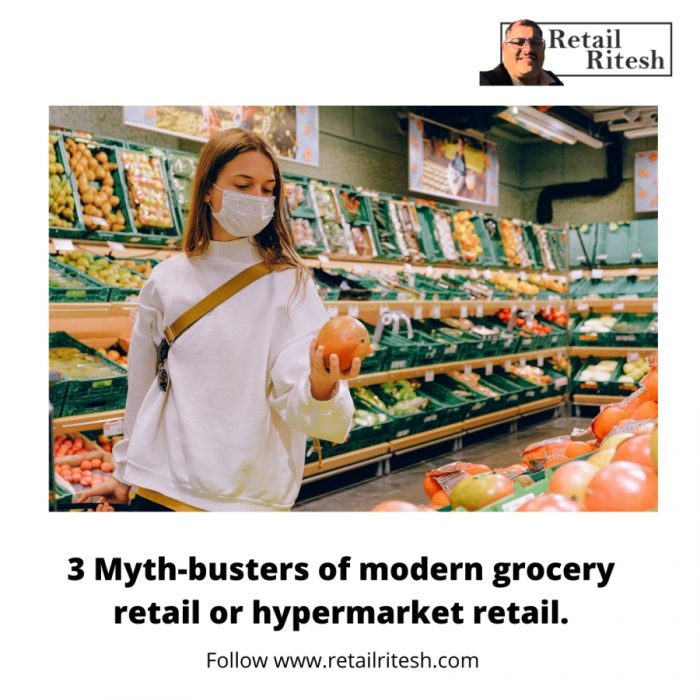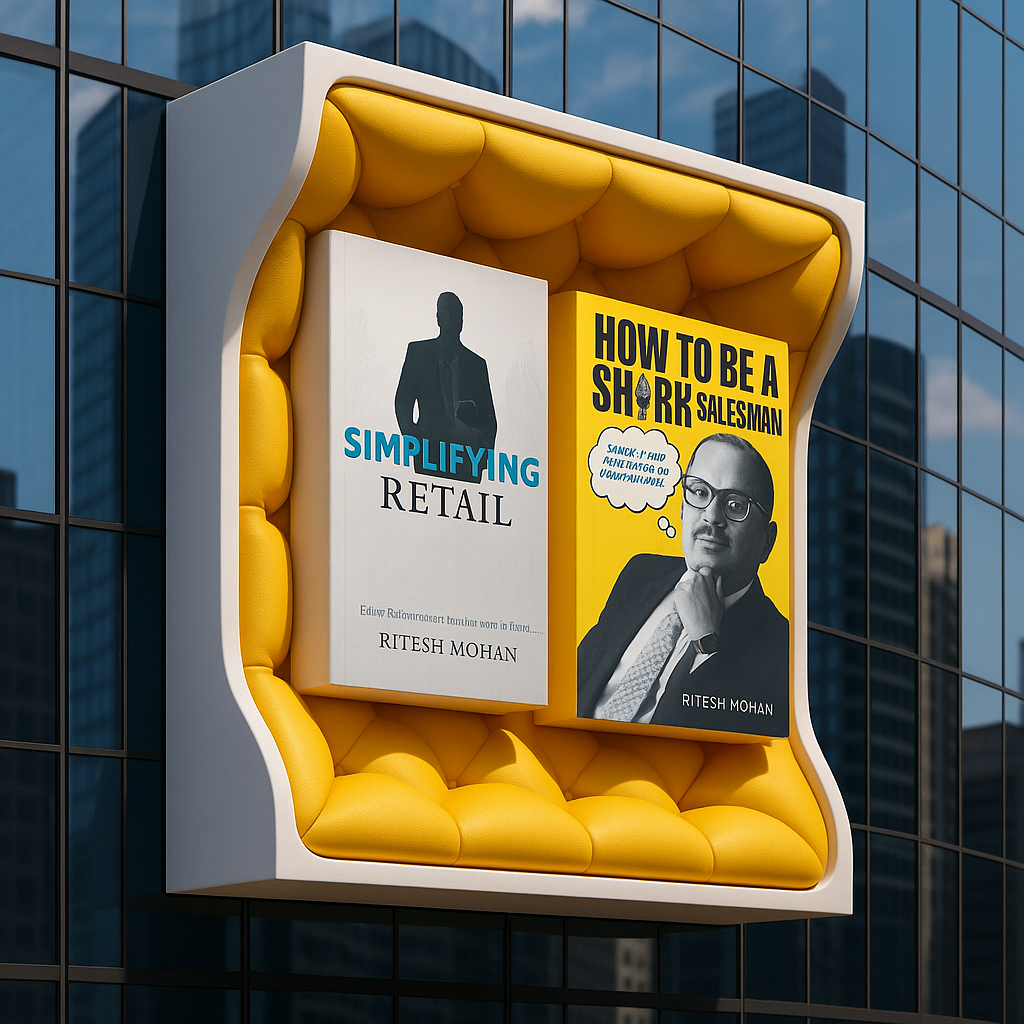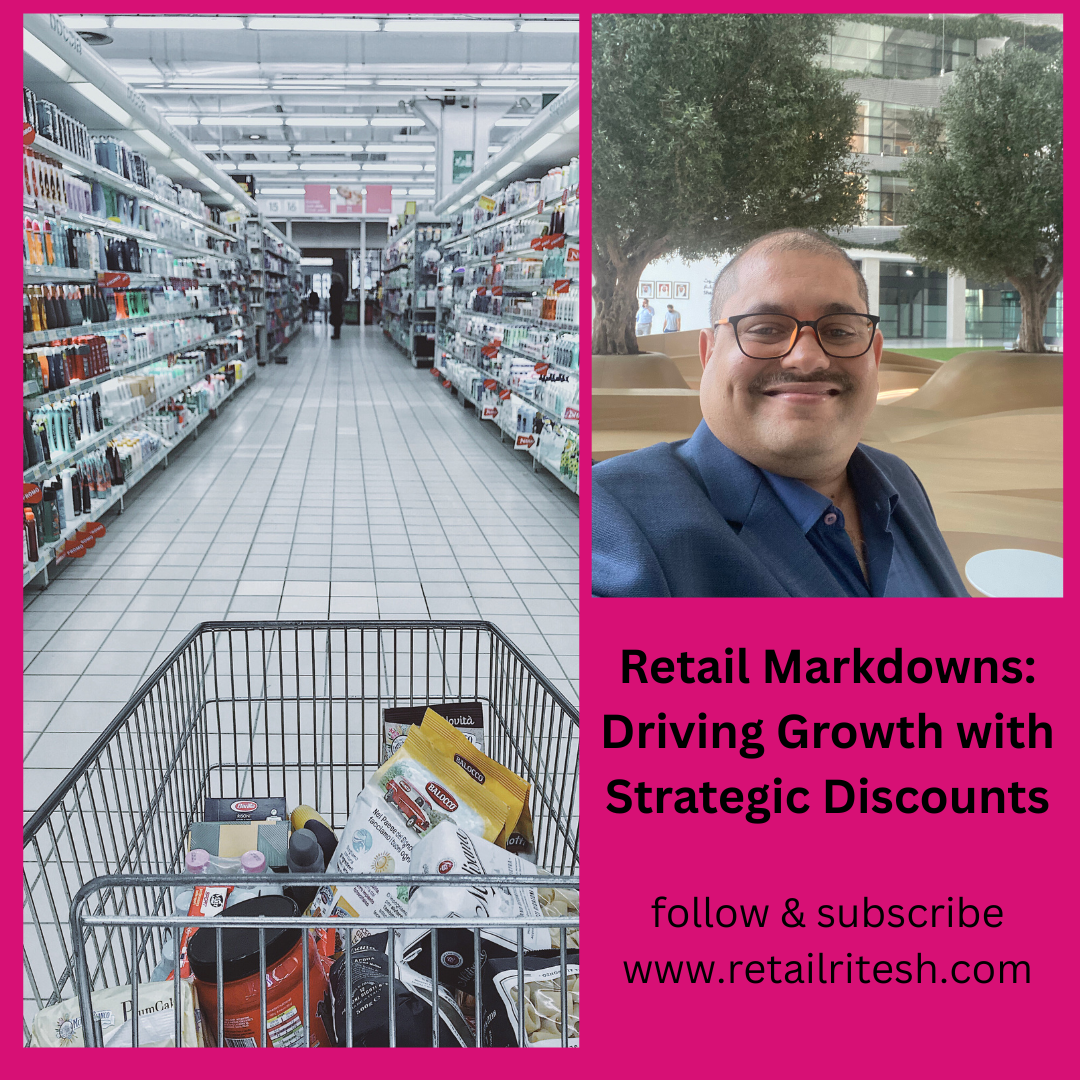3 Myth-busters of modern grocery retail or hypermarket retail.
Understanding the shopper’s journey in a hypermarket/ grocery retail
Recent research of consumers in a grocery retail/ hypermarket revealed
- 80% percent of the shopper’s time is spent simply in moving from one place to another, not looking at and purchasing items i.e. major chunk of time is wasted resulting in nil sales.
- The average hypermarket carries 30k-50k SKUs, yet the shoppers past by them all to emerge with few items in their basket. On average each household buys 300 items per year.
The pain point of modern retail is that most of the shopper’s time in the store spent not buying or selling.
Of all the products on the shelves, only a small number account for most sales.
The challenge for any retailer is to optimize the merchandise mix and stock those items which are required by their customers. Also, ensure that the transactional process gets completed in the shortest time possible.
learn about category management, click here.
Few myths of modern grocery retail
Myth 1:
Is the concept of increasing the customer’s dwelling time a myth?
Myth 2:
Do we need to carry a large number of SKUs to attract customers which results only in sales of few items?
Let me present some stats here based on research conducted in a hypermarket
- 20 million seconds an average shopper spends in a hypermarket or supermarket per week.
- 300 seconds all shoppers spend in a given store, on average, on any single item, in a single week.
There are two main critical factors that create customer angst or dissonance as per the study

- Navigational angst – a shopper spends more time roaming within the store without actually purchasing as he or she is not clear on the placement of the items that he/ she is looking for.
2. Choice angst– overwhelming SKUs 30k-50k in a typical supermarket/hypermarket creates more dissonance rather than enhancing the customer choice aspect.
Learn about retail location checklist, click here
Case study: Stew Leonard’s – modern grocery retailer.
A 500 million USD fresh food retailer, 80% of the products sold are fresh produce. The secret of their success is that it is the retailer who has identified the above two pain points and has alleviated them in their store designs.
The store layout is like a serpentine path with one big aisle leading from the entrance to the end. This eliminates the navigational angst of the shoppers since shoppers follow the single wide aisle path which is followed by other shoppers.
Through its store design, stew Leonard ensures that the right products show up in the shopper’s field of vision by the time they get to the checkout counters.
Thus reducing the second angst i.e. choice angst.
Stew Leonard has a small warehouse area on the side, at the end of the trip, where shoppers can browse for those less needed items.
It makes the store more attractive without bombarding the shopper with massive amounts of merchandise in which they have no interest.
Who owns stew Leonard’s?
Stew Leonard Jr. is an American businessman who is the current president and CEO of Stew Leonard’s, a supermarket chain based in Connecticut and New York.
Watch their video & see the physical store & study its category lay-outing and trolley movements.

Retailers like Tesco and Lidl and Aldi are all pursuing the limited selection strategy on the lines of stew leonard’s approach to the modern retailing.
My Learning:
Active retailing is actively understanding where shoppers are headed and actively making sure that they run into the products they need and which you want to sell.
Myth 3:
Earnings from the margins of the goods sold are the major source of revenues for supermarkets/hypermarkets.
A large share of retailer profit comes from the manufacturers of brands in the forms of rebates, listing or slotting fees, promotional allowances i.e. weekly offer leaflets, seasonal offers, and campaigns.
Second, earnings from the float on cash (accruing interest on cash from sales)
Thirdly, real estate (appreciating value of the property) is applicable to the Indian subcontinent and even the US where the real estate belongs to the hypermarket only.
Lastly, the margin on sales.
Future of Grocery Retail – Rise of small-format stores
German discounters Lidl and Aldi are growing rapidly in the UK with stores that are a tenth of the size of Tesco or Asda stores.
The smaller store offers a faster trip with a more limited selection at lower prices.
The growth of these stores is in fact in understanding the power of the quick trip customers. In fact, the most common number of items purchased in a supermarket is ONE.
Single item purchases account for more than 16 percent of all the shopping trips. 50% of shoppers come out with 5 or more items. The average purchase basket size is 12 items.
I call these stores as community stores, as they operate as neighborhood stores, offering just what the neighborhood’s household needs with an emphasis on freshness (quality) products at modest prices.
Hence, due to this very same reason, in India Kirana shops (small grocery shop) does better business than most of the hypermarket retailers.
Since these small Kirana shops become part of the community or the neighborhood as they understand their customers and even go a step forward in extending their self-funded credit facility to some households.
To date, no hypermarket retail chain has been able to compete with these neighborhood Kirana shops in the Indian sub-continent.
Merchandising challenges for modern grocery retail/supermarkets
A big question is how to merchandise the store, how to do store lay-outing in order to attract customers.
The solution lies in layered merchandising which means that the principal product of each segment or category should be easily accessible in a short path as possible between the entry and the checkout.
The quick trip items like diary etc are kept near the entrance so that the customer enters, picks the product, and goes straight to checkout instead of wandering inside the store.
This approach requires the retailer to understand the buying pattern and segment its shoppers into
- quick trips,
- fill in and
- stock up shoppers,
and layout the floor plan accordingly.
The retailers fail to study the trolley movement paths of their customers.
Learn about Walmart Reimagined, click here.
Main pointers for hypermarkets & supermarket retailers to improve their businesses
To summarize main pointers
- Focus on short trip customers.
- Focus on the vital few items that drive success
- Highlight the promotional price products adequately in the right places
- Create more open spaces within the store layouts.
I would like to end this article with a quote from Frank Woolworths
“I am the World’s worst salesman, therefore I must make it easy for the shoppers to buy”
About the Author:
Ritesh Mohan is a passionate retail professional with over 20 years in the Retail sector, handling some of the biggest brands in beauty, fashion, and fragrances retail & FMCG sector. Ritesh has been instrumental in the growth of some of the regional brands as well in the Middle East region. He specializes in Retail management, Product development, and Brand Management, Retail Operations, Sales Management and Franchising & Business Management. He strongly believes in empowering business owners with his wisdom & experience of around two decades in the industry.
References
- Book “Inside the mind of the shopper” by Herb Sorensen.
- Stew Leonard’s website and Wikipedia pages.
- Cover photo courtesy Photo by Anna Shvets from Pexels
- Inside Photo by Gustavo Fring from Pexels






May 9, 2020 @ 3:08 pm
Thanks great insights and information you really put a great article together
May 9, 2020 @ 5:07 pm
thanks, April for your kind inspiring words. really appreciate.
May 13, 2020 @ 4:52 am
Excellent insight views on Grocery stores and consumer buying behaviors.
Kirana shops are great examples and plenty of business opportunity is foreseen in the near future..
keep inspiring us!
May 13, 2020 @ 3:18 pm
thanks for your kind words.
May 13, 2020 @ 3:19 pm
subscribe to https://www.retailritesh.com to stay connected.
May 13, 2020 @ 8:38 pm
Intriguing article. It will be interesting to see if the digitisation of the supply chain and the analytics that comes with it can help grocery retailers manage risk better.